Murtuza Jadliwala
University of Texas, San Antonio
Promptly Yours? A Human Subject Study on Prompt Inference in AI-Generated Art
Oct 10, 2024
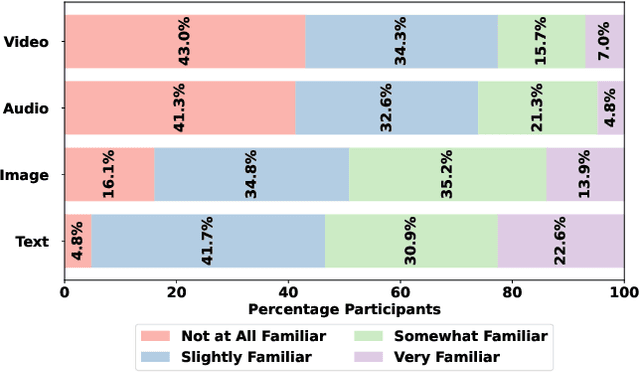
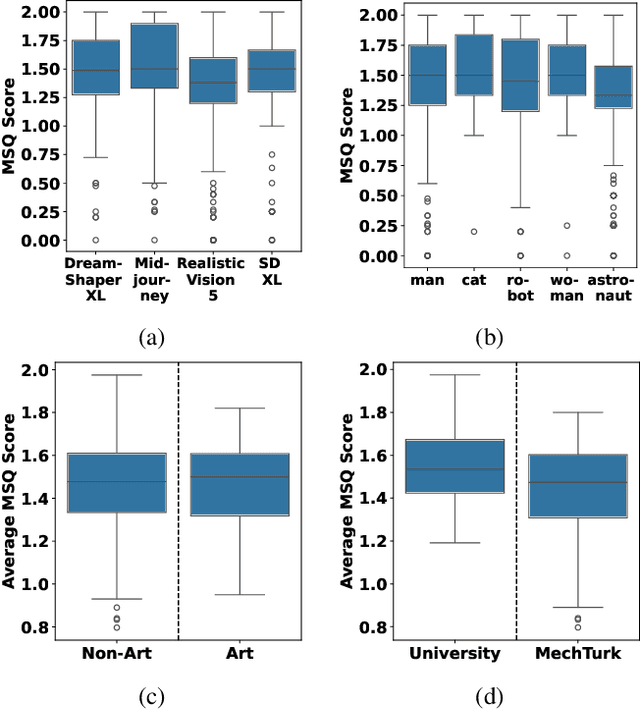

Abstract:The emerging field of AI-generated art has witnessed the rise of prompt marketplaces, where creators can purchase, sell, or share prompts for generating unique artworks. These marketplaces often assert ownership over prompts, claiming them as intellectual property. This paper investigates whether concealed prompts sold on prompt marketplaces can be considered as secure intellectual property, given that humans and AI tools may be able to approximately infer the prompts based on publicly advertised sample images accompanying each prompt on sale. Specifically, our survey aims to assess (i) how accurately can humans infer the original prompt solely by examining an AI-generated image, with the goal of generating images similar to the original image, and (ii) the possibility of improving upon individual human and AI prompt inferences by crafting human-AI combined prompts with the help of a large language model. Although previous research has explored the use of AI and machine learning to infer (and also protect against) prompt inference, we are the first to include humans in the loop. Our findings indicate that while humans and human-AI collaborations can infer prompts and generate similar images with high accuracy, they are not as successful as using the original prompt.
Unintentional Security Flaws in Code: Automated Defense via Root Cause Analysis
Aug 30, 2024



Abstract:Software security remains a critical concern, particularly as junior developers, often lacking comprehensive knowledge of security practices, contribute to codebases. While there are tools to help developers proactively write secure code, their actual effectiveness in helping developers fix their vulnerable code remains largely unmeasured. Moreover, these approaches typically focus on classifying and localizing vulnerabilities without highlighting the specific code segments that are the root cause of the issues, a crucial aspect for developers seeking to fix their vulnerable code. To address these challenges, we conducted a comprehensive study evaluating the efficacy of existing methods in helping junior developers secure their code. Our findings across five types of security vulnerabilities revealed that current tools enabled developers to secure only 36.2\% of vulnerable code. Questionnaire results from these participants further indicated that not knowing the code that was the root cause of the vulnerability was one of their primary challenges in repairing the vulnerable code. Informed by these insights, we developed an automated vulnerability root cause (RC) toolkit called T5-RCGCN, that combines T5 language model embeddings with a graph convolutional network (GCN) for vulnerability classification and localization. Additionally, we integrated DeepLiftSHAP to identify the code segments that were the root cause of the vulnerability. We tested T5-RCGCN with 56 junior developers across three datasets, showing a 28.9\% improvement in code security compared to previous methods. Developers using the tool also gained a deeper understanding of vulnerability root causes, resulting in a 17.0\% improvement in their ability to secure code independently. These results demonstrate the tool's potential for both immediate security enhancement and long-term developer skill growth.
Spiking Neural Networks in Vertical Federated Learning: Performance Trade-offs
Jul 24, 2024Abstract:Federated machine learning enables model training across multiple clients while maintaining data privacy. Vertical Federated Learning (VFL) specifically deals with instances where the clients have different feature sets of the same samples. As federated learning models aim to improve efficiency and adaptability, innovative neural network architectures like Spiking Neural Networks (SNNs) are being leveraged to enable fast and accurate processing at the edge. SNNs, known for their efficiency over Artificial Neural Networks (ANNs), have not been analyzed for their applicability in VFL, thus far. In this paper, we investigate the benefits and trade-offs of using SNN models in a vertical federated learning setting. We implement two different federated learning architectures -- with model splitting and without model splitting -- that have different privacy and performance implications. We evaluate the setup using CIFAR-10 and CIFAR-100 benchmark datasets along with SNN implementations of VGG9 and ResNET classification models. Comparative evaluations demonstrate that the accuracy of SNN models is comparable to that of traditional ANNs for VFL applications, albeit significantly more energy efficient.
We Have a Package for You! A Comprehensive Analysis of Package Hallucinations by Code Generating LLMs
Jun 12, 2024Abstract:The reliance of popular programming languages such as Python and JavaScript on centralized package repositories and open-source software, combined with the emergence of code-generating Large Language Models (LLMs), has created a new type of threat to the software supply chain: package hallucinations. These hallucinations, which arise from fact-conflicting errors when generating code using LLMs, represent a novel form of package confusion attack that poses a critical threat to the integrity of the software supply chain. This paper conducts a rigorous and comprehensive evaluation of package hallucinations across different programming languages, settings, and parameters, exploring how different configurations of LLMs affect the likelihood of generating erroneous package recommendations and identifying the root causes of this phenomena. Using 16 different popular code generation models, across two programming languages and two unique prompt datasets, we collect 576,000 code samples which we analyze for package hallucinations. Our findings reveal that 19.7% of generated packages across all the tested LLMs are hallucinated, including a staggering 205,474 unique examples of hallucinated package names, further underscoring the severity and pervasiveness of this threat. We also implemented and evaluated mitigation strategies based on Retrieval Augmented Generation (RAG), self-detected feedback, and supervised fine-tuning. These techniques demonstrably reduced package hallucinations, with hallucination rates for one model dropping below 3%. While the mitigation efforts were effective in reducing hallucination rates, our study reveals that package hallucinations are a systemic and persistent phenomenon that pose a significant challenge for code generating LLMs.
An Analysis of Recent Advances in Deepfake Image Detection in an Evolving Threat Landscape
Apr 24, 2024Abstract:Deepfake or synthetic images produced using deep generative models pose serious risks to online platforms. This has triggered several research efforts to accurately detect deepfake images, achieving excellent performance on publicly available deepfake datasets. In this work, we study 8 state-of-the-art detectors and argue that they are far from being ready for deployment due to two recent developments. First, the emergence of lightweight methods to customize large generative models, can enable an attacker to create many customized generators (to create deepfakes), thereby substantially increasing the threat surface. We show that existing defenses fail to generalize well to such \emph{user-customized generative models} that are publicly available today. We discuss new machine learning approaches based on content-agnostic features, and ensemble modeling to improve generalization performance against user-customized models. Second, the emergence of \textit{vision foundation models} -- machine learning models trained on broad data that can be easily adapted to several downstream tasks -- can be misused by attackers to craft adversarial deepfakes that can evade existing defenses. We propose a simple adversarial attack that leverages existing foundation models to craft adversarial samples \textit{without adding any adversarial noise}, through careful semantic manipulation of the image content. We highlight the vulnerabilities of several defenses against our attack, and explore directions leveraging advanced foundation models and adversarial training to defend against this new threat.
Towards a Game-theoretic Understanding of Explanation-based Membership Inference Attacks
Apr 10, 2024
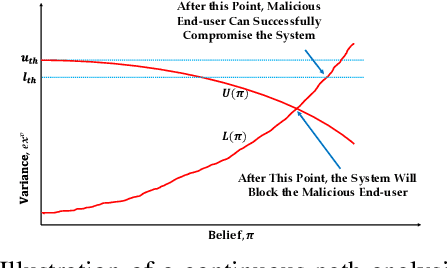

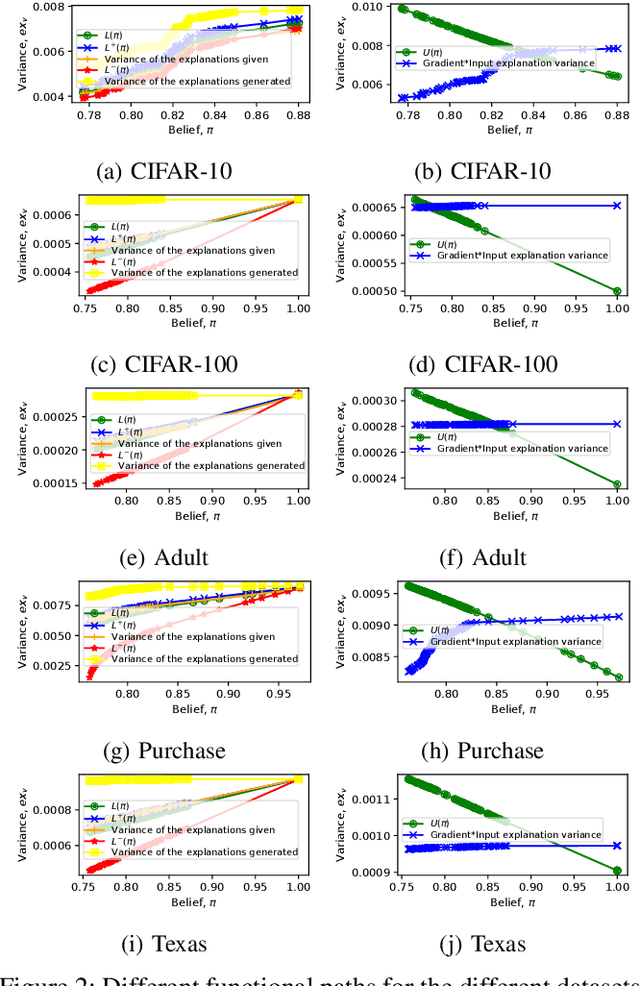
Abstract:Model explanations improve the transparency of black-box machine learning (ML) models and their decisions; however, they can also be exploited to carry out privacy threats such as membership inference attacks (MIA). Existing works have only analyzed MIA in a single "what if" interaction scenario between an adversary and the target ML model; thus, it does not discern the factors impacting the capabilities of an adversary in launching MIA in repeated interaction settings. Additionally, these works rely on assumptions about the adversary's knowledge of the target model's structure and, thus, do not guarantee the optimality of the predefined threshold required to distinguish the members from non-members. In this paper, we delve into the domain of explanation-based threshold attacks, where the adversary endeavors to carry out MIA attacks by leveraging the variance of explanations through iterative interactions with the system comprising of the target ML model and its corresponding explanation method. We model such interactions by employing a continuous-time stochastic signaling game framework. In our framework, an adversary plays a stopping game, interacting with the system (having imperfect information about the type of an adversary, i.e., honest or malicious) to obtain explanation variance information and computing an optimal threshold to determine the membership of a datapoint accurately. First, we propose a sound mathematical formulation to prove that such an optimal threshold exists, which can be used to launch MIA. Then, we characterize the conditions under which a unique Markov perfect equilibrium (or steady state) exists in this dynamic system. By means of a comprehensive set of simulations of the proposed game model, we assess different factors that can impact the capability of an adversary to launch MIA in such repeated interaction settings.
OverHear: Headphone based Multi-sensor Keystroke Inference
Nov 04, 2023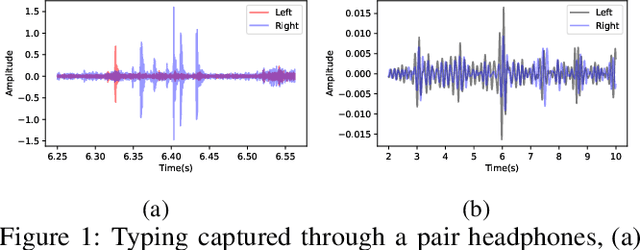
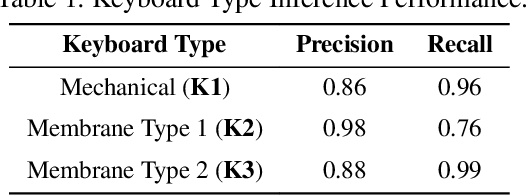
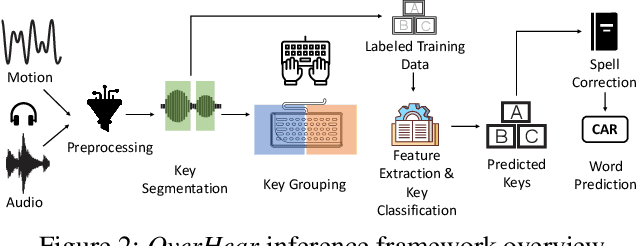

Abstract:Headphones, traditionally limited to audio playback, have evolved to integrate sensors like high-definition microphones and accelerometers. While these advancements enhance user experience, they also introduce potential eavesdropping vulnerabilities, with keystroke inference being our concern in this work. To validate this threat, we developed OverHear, a keystroke inference framework that leverages both acoustic and accelerometer data from headphones. The accelerometer data, while not sufficiently detailed for individual keystroke identification, aids in clustering key presses by hand position. Concurrently, the acoustic data undergoes analysis to extract Mel Frequency Cepstral Coefficients (MFCC), aiding in distinguishing between different keystrokes. These features feed into machine learning models for keystroke prediction, with results further refined via dictionary-based word prediction methods. In our experimental setup, we tested various keyboard types under different environmental conditions. We were able to achieve top-5 key prediction accuracy of around 80% for mechanical keyboards and around 60% for membrane keyboards with top-100 word prediction accuracies over 70% for all keyboard types. The results highlight the effectiveness and limitations of our approach in the context of real-world scenarios.
BayBFed: Bayesian Backdoor Defense for Federated Learning
Jan 23, 2023Abstract:Federated learning (FL) allows participants to jointly train a machine learning model without sharing their private data with others. However, FL is vulnerable to poisoning attacks such as backdoor attacks. Consequently, a variety of defenses have recently been proposed, which have primarily utilized intermediary states of the global model (i.e., logits) or distance of the local models (i.e., L2-norm) from the global model to detect malicious backdoors. However, as these approaches directly operate on client updates, their effectiveness depends on factors such as clients' data distribution or the adversary's attack strategies. In this paper, we introduce a novel and more generic backdoor defense framework, called BayBFed, which proposes to utilize probability distributions over client updates to detect malicious updates in FL: it computes a probabilistic measure over the clients' updates to keep track of any adjustments made in the updates, and uses a novel detection algorithm that can leverage this probabilistic measure to efficiently detect and filter out malicious updates. Thus, it overcomes the shortcomings of previous approaches that arise due to the direct usage of client updates; as our probabilistic measure will include all aspects of the local client training strategies. BayBFed utilizes two Bayesian Non-Parametric extensions: (i) a Hierarchical Beta-Bernoulli process to draw a probabilistic measure given the clients' updates, and (ii) an adaptation of the Chinese Restaurant Process (CRP), referred by us as CRP-Jensen, which leverages this probabilistic measure to detect and filter out malicious updates. We extensively evaluate our defense approach on five benchmark datasets: CIFAR10, Reddit, IoT intrusion detection, MNIST, and FMNIST, and show that it can effectively detect and eliminate malicious updates in FL without deteriorating the benign performance of the global model.
A Game-theoretic Understanding of Repeated Explanations in ML Models
Feb 05, 2022
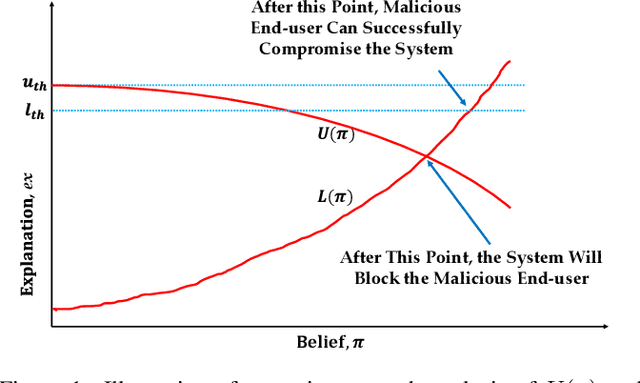
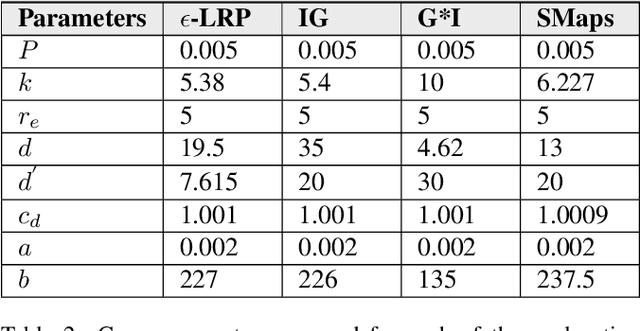
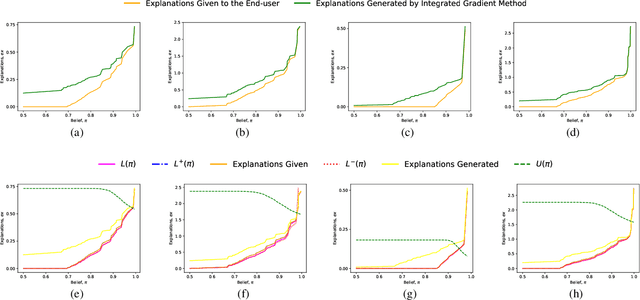
Abstract:This paper formally models the strategic repeated interactions between a system, comprising of a machine learning (ML) model and associated explanation method, and an end-user who is seeking a prediction/label and its explanation for a query/input, by means of game theory. In this game, a malicious end-user must strategically decide when to stop querying and attempt to compromise the system, while the system must strategically decide how much information (in the form of noisy explanations) it should share with the end-user and when to stop sharing, all without knowing the type (honest/malicious) of the end-user. This paper formally models this trade-off using a continuous-time stochastic Signaling game framework and characterizes the Markov perfect equilibrium state within such a framework.
Zoom on the Keystrokes: Exploiting Video Calls for Keystroke Inference Attacks
Oct 22, 2020Abstract:Due to recent world events, video calls have become the new norm for both personal and professional remote communication. However, if a participant in a video call is not careful, he/she can reveal his/her private information to others in the call. In this paper, we design and evaluate an attack framework to infer one type of such private information from the video stream of a call -- keystrokes, i.e., text typed during the call. We evaluate our video-based keystroke inference framework using different experimental settings and parameters, including different webcams, video resolutions, keyboards, clothing, and backgrounds. Our relatively high keystroke inference accuracies under commonly occurring and realistic settings highlight the need for awareness and countermeasures against such attacks. Consequently, we also propose and evaluate effective mitigation techniques that can automatically protect users when they type during a video call.
 Add to Chrome
Add to Chrome Add to Firefox
Add to Firefox Add to Edge
Add to Edge